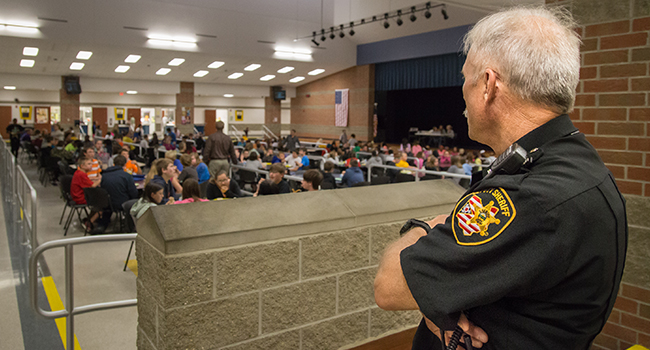
Tennessee District Expands SRO Program
Sullivan County Schools have expanded its school resource officer program from one officer at each of the high schools to 18 SROs, enough for one per campus.
- By Jessica Davis
- March 22, 2019
Sullivan County Schools have placed official school resource officers at all but one of its schools, according to education and law enforcement officials. Director of Schools Evelyn Rafalowski said the final facility is being covered by other school resource officers until its officer is trained and ready.
In the 2019-2020 budget, the SRO program was expanded from one officer at each of the four high schools to 18 SROs—enough for one per campus. Because some schools share campuses, all 22 Sullivan County schools will have an SRO on campus.
Commissioner Angie Stanley, chairwoman of the commission’s Administrative Committee, said that the SRO program “demonstrates the commitment we all share to keep students safe.” Stanley said that in addition to being defenders, SROs are role models and confidants for students.
According to Sheriff Jeff Cassidy, each officer goes through 40 hours of SRO training, 40 hours of active shooter training and 40 hours of SWAT training. Officers must also have the 40 hours of basic law enforcement training and yearly must go through 16 hours of resource officer refresher training.
The SROs are also trained for LEAD (Law Enforcement Against Drugs), which is similar to the old DARE (Drug Abuse Resistance Education) program. Sullivan County schools currently have LEAD in place as a pilot program for fifth graders at four campuses.
The officers will also help train staff and faculty at campuses.
“They always wear a lot of different hats,” Cassidy said.
Rafalowski said that for the first year, the program will cost the Sheriff’s Office $966,000 and the Board of Education $358,000. After that, the cost will lower to $757,000 for the Sheriff’s Office, but remain the same for the school system, though those amounts will increase as employee pay increases.
Rafalowski said the district isn’t using state school safety grants for the program because those funds are uncertain from year to year. Instead, the district has used those grants to add more secure entrances and the new Raptor visitor management system at some schools. Bullet-resistant Lomar film will begin to be installed at county schools soon as well.
About the Author
Jessica Davis is the Associate Content Editor for 1105 Media.